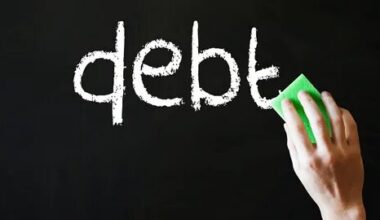Borrowing money isn’t always a bad idea. Sometimes, it’s the smartest move you can make — whether it’s to buy a home, fund a business, or consolidate debt. But the truth is, not all loans are created equal. Understanding how each one works can save you from hidden fees, bad rates, and even financial ruin.
In this post, we’ll break down the different types of loans, their pros and cons, and what you should know before signing that dotted line.
Why Understanding Loan Types Is Crucial
Every loan tells a story — not just of what you borrow, but how you’ll repay and what it could cost you in the long run.
Here’s why you should take time to understand loan types before borrowing:
- Different interest rates: Some loans carry sky-high interest, while others are surprisingly affordable.
- Collateral risks: Certain loans require you to pledge your assets (home, car, or savings).
- Repayment structure: Some loans offer flexible repayment; others lock you into a strict schedule.
- Eligibility requirements: A good credit score can open cheaper loan doors.
- Hidden charges: Origination, processing, and late fees can add thousands to your debt.
If you borrow without understanding the type of loan, you could end up paying double what you borrowed — or worse, lose your collateral.
1. Secured vs. Unsecured Loans — The Foundation of All Lending
Before exploring the many loan types out there, you first need to know this core difference:
Secured Loans: Collateral-Backed Borrowing
Secured loans are backed by an asset — like your house, car, or investment. This collateral gives the lender confidence, so they often charge lower interest rates.
Pros:
- Lower rates
- Higher borrowing limits
- Easier approval for bad credit borrowers
Cons:
- Risk of losing your asset if you default
Common examples: mortgages, home equity loans, and car loans.
👉 For a deeper breakdown, check out this Investopedia guide on secured vs. unsecured loans.
Unsecured Loans: Borrowing on Trust
Unsecured loans don’t require collateral — your approval depends on your creditworthiness. That freedom, however, comes at a price: higher interest and stricter approval criteria.
Pros:
- No risk to your physical assets
- Quick approval process
Cons:
- Higher interest rates
- Limited borrowing power
Typical examples include credit cards, personal loans, and student loans.
See how unsecured lending works in this NerdWallet comparison of personal loan options.
2. Installment Loans vs. Revolving Credit
All loans fall into two major repayment structures — installment or revolving.
| Feature | Installment Loan | Revolving Credit |
|---|---|---|
| How it works | One lump sum, repaid in fixed amounts | Borrow, repay, and borrow again up to a credit limit |
| Predictability | Fixed monthly payments | Variable monthly payments |
| Flexibility | Less flexible | Highly flexible |
| Common forms | Mortgages, car loans, personal loans | Credit cards, HELOCs |
Installment loans are great for big, one-time needs (like buying a home). Revolving credit suits ongoing or unpredictable expenses.
3. The Major Types of Loans You Should Know
Now, let’s break down the most common loan types — from personal loans to business financing — and what makes each one unique.
A. Personal Loans
A personal loan is one of the most flexible forms of borrowing. It can be used for nearly anything — home renovation, medical bills, travel, or emergencies.
Pros:
- Fixed interest and payment schedule
- Usually no collateral required
Cons:
- Interest can be higher if your credit score is low
- Some lenders charge early repayment penalties
Best for: Consolidating debt or handling one-time expenses.
B. Debt Consolidation Loans
If you’re juggling multiple debts, a debt consolidation loan can simplify your life. It combines several high-interest debts into one, ideally with a lower rate.
Pros:
- Simplifies payments
- Can lower your monthly cost
Cons:
- May lead to more debt if spending habits don’t change
Pro Tip: Always compare the total cost — not just the rate. Sometimes, consolidation adds more years to repayment.
C. Mortgage Loans
A mortgage is the biggest and most important loan most people ever take. It’s used to buy or refinance a home.
Common Types:
- Fixed-rate mortgage: The interest stays the same for the loan’s life.
- Adjustable-rate mortgage (ARM): The rate changes after a certain period.
- Government-backed mortgage: Includes FHA, VA, and USDA loans for special eligibility categories.
Pros:
- Long repayment period (10–30 years)
- Generally lower interest rates
Cons:
- Requires collateral (your home)
- Missed payments can lead to foreclosure
D. Home Equity Loans & HELOCs
If you already own property, you can borrow against its value.
- Home Equity Loan: Fixed interest, lump-sum payment.
- HELOC (Home Equity Line of Credit): Revolving line of credit with variable rates.
Pros:
- Lower interest rates than personal loans
- Possible tax benefits on interest
Cons:
- Risk of losing your home if you default
E. Auto Loans
Auto loans are secured loans that help you buy a car. The vehicle serves as collateral until you pay it off.
Pros:
- Often lower rates than personal loans
- Helps build credit when repaid on time
Cons:
- Missed payments can lead to repossession
- Depreciation can make your car worth less than the loan balance
F. Student Loans
Designed for education costs — tuition, housing, and materials.
Types:
- Federal student loans: Fixed rates, flexible repayment, forgiveness programs
- Private student loans: Variable rates, fewer protections
Pros:
- Can cover full education costs
- Federal options are more flexible
Cons:
- Private loans can be expensive
- Default damages your credit for years
G. Payday Loans
Short-term, high-interest loans often marketed as “quick cash.”
Pros:
- Immediate access to funds
- Easy to qualify
Cons:
- Extremely high interest (up to 400% APR)
- Can trap borrowers in a cycle of debt
Avoid payday loans unless you’ve explored every other option.
H. Business Loans
Business loans support growth, cash flow, or equipment purchases.
Common Options:
- Term loans
- Business lines of credit
- SBA (or government-guaranteed) loans
Pros:
- Tailored for business needs
- Often tax-deductible interest
Cons:
- Requires business records, collateral, and credit history
I. Bridge Loans
A bridge loan provides short-term financing between transactions — such as buying a new home before selling the old one.
Pros:
- Quick access to funds
- Helps maintain cash flow
Cons:
- High fees and short repayment terms
J. Guarantor / Co-Signer Loans
If your credit is weak, a friend or relative can co-sign, guaranteeing repayment.
Pros:
- Easier approval for low-credit borrowers
- Can secure better terms
Cons:
- Default damages both parties’ credit
How to Choose the Right Loan for You
When evaluating loan options, think like a lender — but act like an investor in your own financial health.
| Decision Area | What to Ask Yourself |
|---|---|
| Purpose | Why am I borrowing? Can I delay or reduce the amount? |
| Affordability | What monthly payment fits comfortably in my budget? |
| Interest Rate | Fixed or variable? What’s the APR (not just interest)? |
| Collateral | Am I comfortable risking assets for a lower rate? |
| Fees | Are there hidden or prepayment fees? |
| Term | How long do I want to be in debt? Shorter is often cheaper. |
The Emotional Side of Borrowing
Let’s be honest — money isn’t just math. It’s emotional. Borrowing can either feel empowering or enslaving.
The Bright Side
- Helps you achieve life goals faster (home, business, education)
- Builds credit when managed wisely
- Opens opportunities for investment and growth
The Dark Side
- Can lead to stress, sleepless nights, and financial strain
- Secured loans risk your home or car
- Missed payments can haunt your credit for years
The trick? Borrow consciously, not impulsively.
Smart Borrowing Checklist
Before signing any loan agreement, make sure you’ve done these:
✅ Compare at least three lenders
✅ Read the fine print carefully
✅ Ask about hidden fees and penalties
✅ Use loan calculators to estimate true cost
✅ Avoid loans that sound “too easy” or “instant”
Final Thoughts: Borrowing Smart Is Better Than Borrowing Fast
Every loan has a purpose — but not every loan has your best interest at heart. Before borrowing, ask yourself:
- Do I really need this loan right now?
- Can I handle repayment even if my income drops?
- What’s the total cost over the entire term?
Remember: the smartest borrowers aren’t those who borrow the most — but those who borrow the best.
If you want to learn how to compare loans, interest rates, and credit scores effectively, you can explore this helpful Bankrate loan comparison resource.







